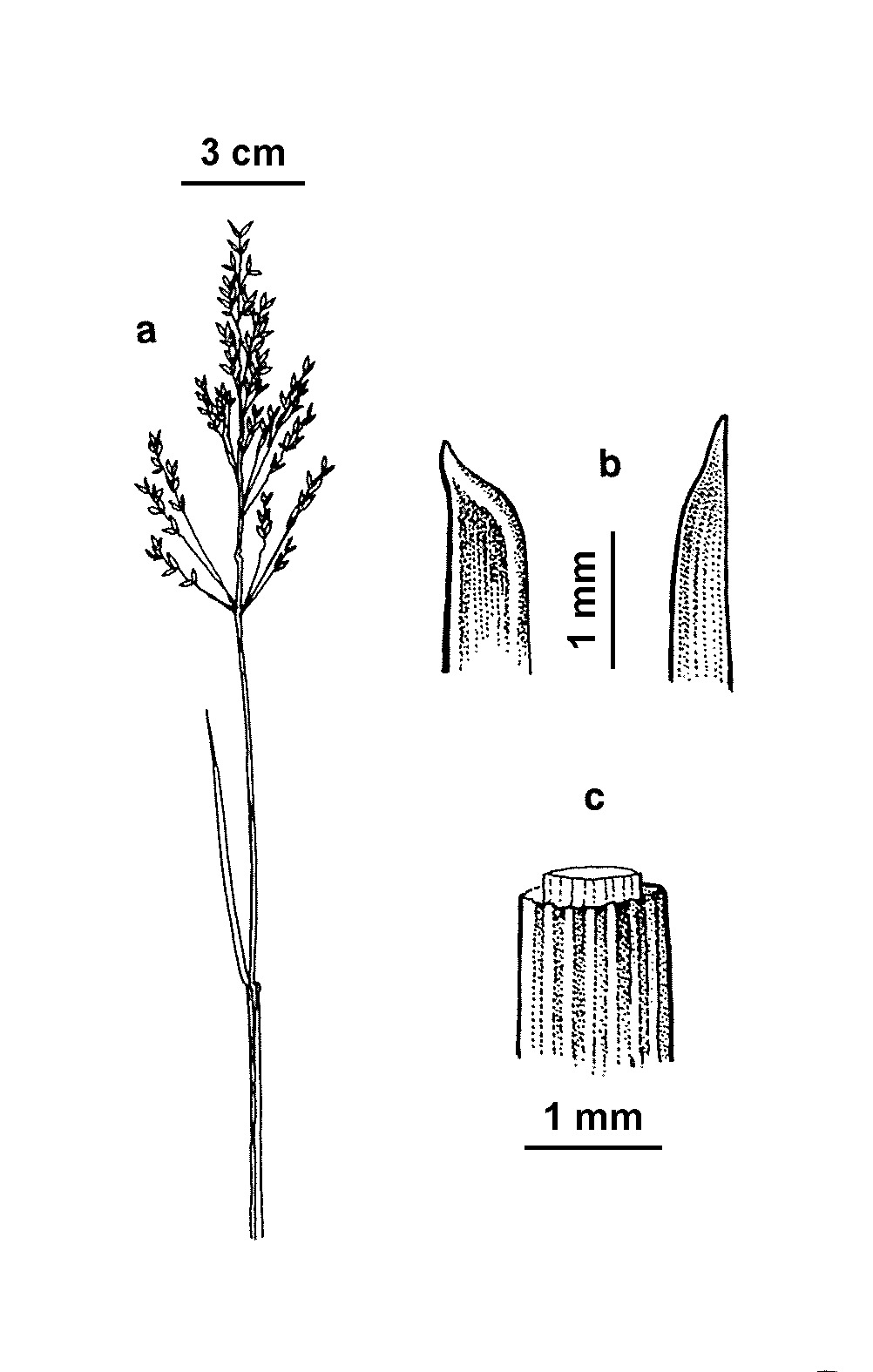Poa clelandii
VickeryTufted or shortly rhizomatous perennial, culms erect, to c. 75 cm high, strongly compressed, often purplish. Leaves smooth and glabrous (rarely shortly pubescent); sheath pale green to distinctly purplish; blade flat to closely folded, firm, abruptly tapered at the apex and often with an oblique, incurved point, to c. 25 cm long and 3 mm wide; ligule truncate, 0.3–1.5 mm long. Inflorescence an ovate to lanceolate panicle, to 12 cm long and 8 cm wide (but often smaller and loosely contracted). Spikelets 3–5-flowered, 3–6 mm long, commonly purplish; glumes subequal or the upper slightly longer and broader, 3-nerved, slightly shorter than the lowest lemma; lemma distinctly 5-nerved, 2–3.5 mm long, sparsely to densely short-pubescent in the lower half, rarely with longer hairs along the keel; web absent or weakly developed Flowers Sep.–Jan.
LoM, MuM, Wim, GleP, VVP, VRiv, GipP, OtP, WaP, Gold, CVU, GGr, DunT, EGL, EGU, WPro, HSF, HNF, OtR, Strz. Also SA, Tas. Occasional in grassland, grassy woodland and wettish heaths near the coast throughout most of its range, but extending inland to near Ballarat and at higher altitudes in the Grampians on the Major Mitchell Plateau, Victoria Range and Mt Arapiles.
Plants from the eastern part of the species range (e.g. near Mallacoota) were formerly regarded as P. affinis Vickery. These plants tend to have finer leaves and paler sheath than those from the west. True P. affinis, from dryish sandstone country near Sydney, generally produces leafy aerial stems or stolons, and has broader, more distinctly scabrous leaves than P. clelandii.
Walsh, N.G. (1994). Poaceae. In: Walsh, N.G.; Entwisle, T.J., Flora of Victoria Vol. 2, Ferns and Allied Plants, Conifers and Monocotyledons, pp. 356–627. Inkata Press, Melbourne.
 Spinning
Spinning

